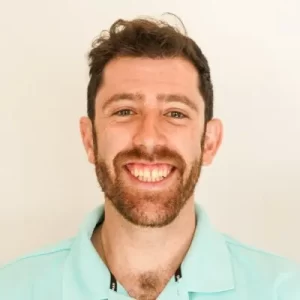Apple or Google? Ford, Chevy, Toyota, or Honda? Coke or Pepsi? Or Mountain Dew?
Every day, customers choose between different products. When asked why they picked one, they often mention logical reasons like better features, newer technology, or longer-lasting performance.
However, their choices are also influenced by emotional factors like social proof, attractive design, and messages that connect with their deeper needs. A well-designed brand feels genuine and aligns with the customer’s values, influencing their decision beyond just the facts.
Think about it – what brand comes to mind when you see that iconic swoosh symbol? You got it—Nike! That’s the power of branding.
Brand identity design is the secret sauce that gives your brand its unique look and feel, making it instantly recognizable in a crowded market. A strong brand goes beyond aesthetics but does not overlook the importance of a visually appealing presence.
You need strategic and intentional design to create a brand that demands attention.
So, what exactly is brand design? What does it consist of, and how can you implement design strategies that capture attention and stay memorable? In this post, we’ll explore them in detail and highlight why brand design is crucial for your business’s success.
What is Brand Design?
Brand design is the process of creating a brand’s visual look. This includes elements like the logo, colors, fonts, illustrations, and photos that all work together.
A brand’s visual identity reflects its personality and positioning, so good brand design is based on research and guided by a clear strategy.
Brand design connects research, strategy, and how people experience the brand through websites, marketing materials, packaging, and presentations.
What Elements Does Brand Design Include?
A key aspect of brand design is creating the core elements that form a branding and corporate identity. These elements must work together as a cohesive system, making it crucial to consider the whole system when designing each part. Let’s break down these individual components.
- Logo
Whether a wordmark, symbol, or combination, a logo is a brand’s mark on the world. It’s a visual symbol with meaning that instantly communicates a brand’s essence. A memorable logo is like the face of your brand—recognizable at a glance and hard to forget.
- Colors
Colors play a vital role in brand design. Each color psychologically impacts the audience, so understanding how they influence perception is key to using them effectively. The right color palette can evoke emotion, connect, and tell your story without a single word.
- Typography
Fonts and typefaces are unique design elements, each being a system in itself. Carefully designed, they bring a distinct personality to the brand. Typography can subtly guide how people feel about your brand—whether it’s elegant, bold, or playful.
- Shapes
Shapes are fundamental visual stimuli, rich with instinctual meaning. Whether subtle or direct, shapes form a powerful foundation in brand design; they speak to us subconsciously, shaping how we perceive strength, harmony, or innovation in a brand.
- Illustration
Illustrations add instant personality to brand design. Defining a consistent style is important, and it’s crucial to consider how illustrations will interact with other elements. A strong illustration style makes your brand feel alive, helping you to narrate stories and connect emotionally with your audience.
- Iconography
Icons simplify complex ideas into easy-to-understand visuals. Blending art and science, good iconography communicates clearly and simply while reflecting the brand’s industry and purpose. Great icons look sharp and create a visual shorthand that speaks volumes in a single glance.
- Texture and Pattern
Textures add surface quality to a design, while patterns are repeated shapes or forms. These elements support the design’s message, enhancing it without distracting it. Used wisely, texture and pattern add depth and dimension, making your brand feel tactile and multi-layered.
- Photography
Photography visually represents the brand’s identity. The style and treatment of photos should reflect the brand’s personality as much as their content does. It’s not just about what the image captures—how it makes people feel when they experience it that drives engagement.
- Video
Video is the best way to incorporate storytelling into brand design. It captures the audience’s attention longer and more effectively than other media. A powerful video doesn’t just inform—it captivates and transports viewers into your brand’s world.
- Animation and Motion
Animation brings static design to life. Used subtly, it can help users understand how to interact with a system, but because it draws attention, it should be used sparingly. When done right, animation creates delightful moments that keep people engaged with your brand.
- Interactive Elements
Interactive elements engage users, often through websites or digital experiences. These features go beyond simple animation by allowing users to interact directly with the brand. They invite your audience to become part of the experience, transforming passive viewers into active participants.
- Data Visualization
Data visualization represents complex information using charts and graphs. It should prioritize clarity and comprehension while maintaining visual appeal. When done right, data visualization turns raw numbers into stories, making insights come alive for your audience.
- Layout
Layout is the structure that organizes visual elements. It balances and guides the design, making it visually appealing and easy to navigate. A well-crafted layout isn’t just about order—it’s about creating flow and making every interaction intuitive and engaging.
How Do You Execute Brand Design?
In brand design, the elements mentioned above are just the basic pieces. The real magic happens when those pieces are brought to life through proper execution.
Executing brand design isn’t about luck or guessing. It’s about following a proven process. Here’s how you do it, step by step.
- Do Your Research
Good branding always starts with research, and brand design is no different. This means looking into market trends, understanding your customers’ needs, and getting insights from your team. By knowing your market, your audience, and your company’s unique strengths, you can build a solid foundation for your brand design.
- Clarify Your Strategy
A clear brand strategy guides a strong brand design. This includes defining key elements like your brand’s purpose, personality, and target audience. Think of it as your brand’s blueprint, helping to shape the following visual identity.
- Design Your Elements
With your research and strategy in place, you can now start creating your design elements. Every element should work together to form a cohesive visual system, from the logo and colors to fonts and photos. Each digital branding solution should fit perfectly into your brand’s look and feel.
- Create Your Touchpoints
Touchpoints like your website, brochures, and signage are where your brand’s design comes to life. This is the stage where all the design elements come together to communicate your brand’s message to the world.
The Takeaway
A strong brand identity is the backbone of your business, shaping every interaction with your customers. A well-crafted brand identity design reflects your values and vision, from building recognition and trust to attracting the right audience and driving growth. When we aligned our website with our brand’s values after we rebranded it to Global Upscale, it improved its look and strengthened our commitment to quality and detail for all our global clients.
This connection between a brand and what the business offers is essential. It’s not just about getting noticed; it’s about being remembered and respected. In today’s cut-throat market, a clear and strong brand identity helps you stand out.
Looking to create a powerful brand identity? Global Upscale offers expert brand identity design services to build a strong, consistent strategy that sets your business apart. Whether you have questions, want to schedule an appointment, or need more information about our services, our team is here to assist you.



